its paid sponsors, whose products you need!
| Home |
| Intro |
| Current Issue |
|
Mailing List |
| Store |
| Strength |
| Subscriber Content |
| ARCHIVES
|
| Martialism |
| Pacifism |
| Q & A |
| Cunning-Hammery |
| Advertise With Us |
| Submit An Article |
| Staff |
| Discussion Forum |
| Links |
“Stay ‘unreasonable.’ If you
don’t like the solutions [available to you], come up with your
own.”
Dan Webre
The Martialist does not
constitute legal advice. It is for ENTERTAINMENT
PURPOSES ONLY.
Copyright © 2003-2004 Phil Elmore, all rights
reserved.
The Seven Blocks of Kali
By Sifu Anthony Iglesias with Sifu Eric Winfree
The basic seven blocks and deflections of
Kali are simple and very effective in the medium range of stick combat.
These seven defenses cover all sectors and each has its follow-through for
strikes, disarms, and more.
The Roof Block literally looks like youre putting a roof over your head.
Its main purpose is to stop anything coming in on a downward angle to your
left side. The checking hand of the Roof Block aids in the redirection of
the attack and is used for trapping and disarms. It also provides
reinforcement for the block.
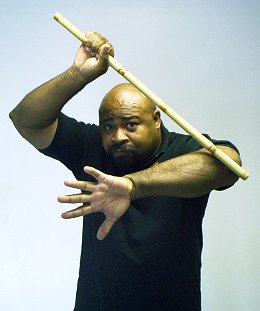
Performing the Roof Block.
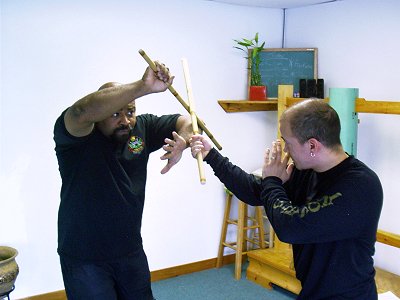
Applying the Roof Block.
The Low Wing and High Wing are downward
stick defenses that deflect incoming lateral strikes. The Wing deflects
instead of wedging, which is most useful against hard power strikes. It
uses the principle of simultaneous defense and attack in its follow
through.
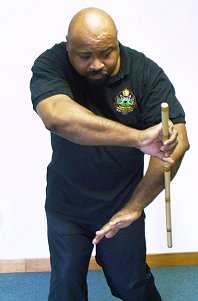
Performing the Wing.
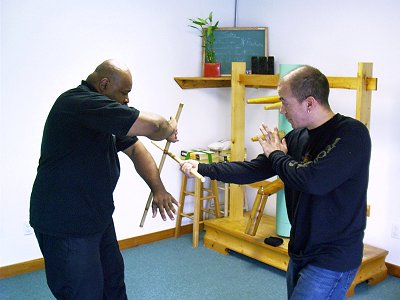
Applying the Wing.
I call the Drop Stick Deflection the “Oh
S$&@!” technique. This defense usually requires a slight step back with
the right foot to receive the force. You then step and return for
the counter. The key thing to look for in using this block is to make sure
your weapon is not angled too horizontally. Otherwise, the attacking
weapon will slide up the block and make contact with either the hand or
the body. The checking hand is in palm-up position so as not to expose the
sensitive inner forearm area that houses the veins and nerves.
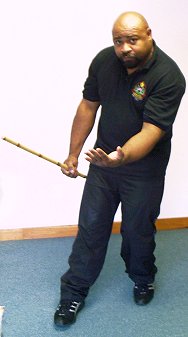
Performing the Drop Stick Deflection.
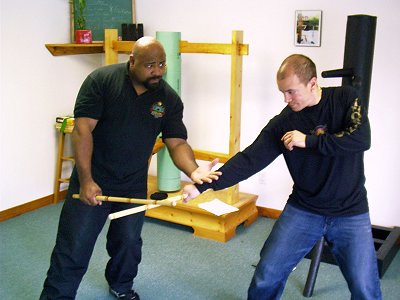
Applying the Drop Stick Deflection.
The Low Wing on the outside (right side) is
another just happens to be there technique. Like the Wing on the inside,
this defense deflects and attacks almost simultaneously. Side-stepping to
the left usually accompanies this block.
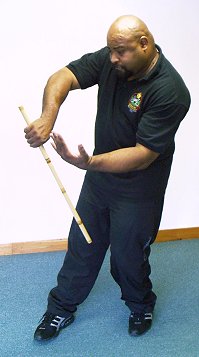
Performing the Wing outside.
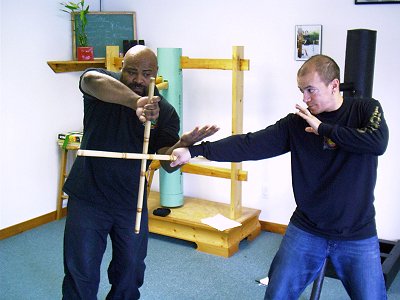
Applying the outside Wing defense.
The High Shield, in appearance. is similar
to the Roof Block and can be used against power hits if you have good
root. Unlike the Roof Block, it is primarily a deflection that is followed
by a wrist strike to the temple. The checking hand is used to check the
attacker’s hand or arms, slicing the fingers or wrist to disarm the
opponent (if you are armed with a knife).
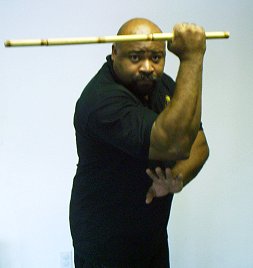
Performing the High Shield.
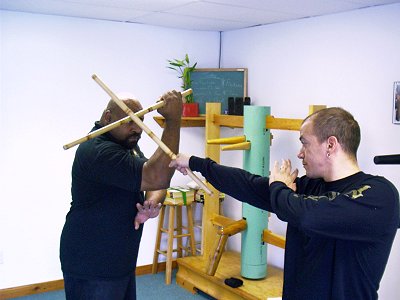
Applying the High Shield.
The Inside Deflection is a favorite of mine
for its simplicity. Its like holding a shield up and facing the angle of
attack. A very simple and direct defense, the Inside Deflection has many
follow up limb destruction options.
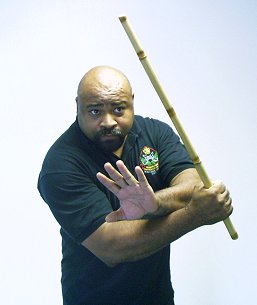
Performing the Inside Deflection.
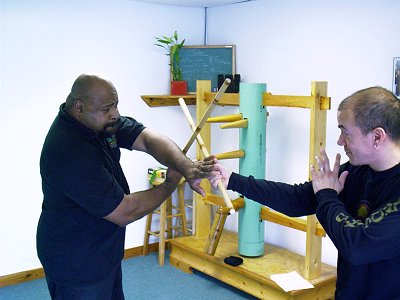
Performing the Inside Deflection.
The Outside Deflection, like the Inside, is
another favorite of mine. It is a mirror image of the Inside Deflection,
defending the left side. It is very devastating to the attacking
limb in its follow through.
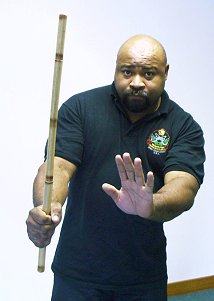
Performing the Outside
Deflection.
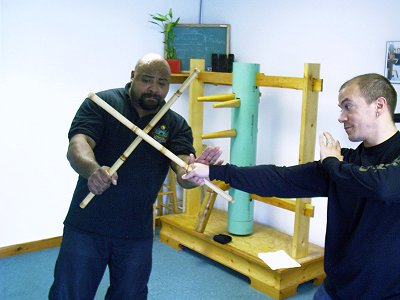
Applying the Outside Deflection.
These seven basic defenses can be
translated to virtually any weapon. If we look at the Japanese swordplay
we can see similarities in position and follow through.
